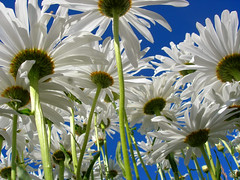In the image above you can see a mind map of my PLE (Personal Learning Environment) , where I organised through various nodes the places, people, skills, technologies and materials that are involved in my learning process. From this activity I learnt that this PLE is personal, so I felt free to express myself in the contents and the layout. Since this map is the result of a long learning process through all my years of study, it took me time to think upon the main concepts to insert, but after a first reflection the building process was quite easy and straightforward.
Now I would like to give you a brief explanation of some choices I made while building my map that can help you to understand my English learning process.
First of all, you can notice that I highlighted with different colours the core branches of the map in order to have an immediate overview of the upper part (in red and orange) and distinguish it from the other (in green and blue), which goes into specific details. The subcategories for each branch are listed into white boxes in order to create a clearer impact on the viewer.
The two nodes ‘Who’ and ‘Where’ contains the people who can contribute to my learning process and the places where I can find useful ‘information’ for increasing my language and cultural competence. At present, my ‘learning process’ is mainly individual or developed through the interaction with people, such as my classmates, American peers from the exchange and English professors at the University and on the Web; or improved with an interaction with people I meet when I travel abroad or when I work as a receptionist in a Youth Hostel. In the near future I hope to travel a bit abroad and find a job that allows me to enrich my language knowledge (e.g. translator, clerk in a foreign trade office).
The part below of the map was the most complex and difficult part to represent graphically as it contains the most variety of concepts. I decided to point out on the right part of the scheme the devices I usually use to ‘check’ (grammar books and exercises, dictionaries, software, etc.) and ‘store information’ (feeds, bookmarks, folders, and links in my blog), and on the left part I listed ‘how I can act’ on my language knowledge by making a distinction between the four main skills (listening, writing, speaking and reading).
In my University career I focused for the most part on the formal side of English in order to improve my language acquisition, but I must admit that in this last year I started thinking on more informal contexts, using new tools on computer and so enlarging my view of “Learning Environment”. Now that I can explore the virtual world, exchange ideas with foreign people and test my language competence, I’m keener on the use of technologies to learn a language.
To conclude, it was really useful to represent my own PLE. I was able to categorize the materials I usually have at my disposal and I realised that during our last English course on blog I learnt using new tools to improve my language learning. I am referring in particular to Delicious, Bloglines, Google Docs that are clearly shown in my map. Now that I have developed my PLE and that I’m finishing University, I need to find out new ways to keep up my lifelong learning and to achieve those goals I haven’t fully met so far at the University.
Bye
Anna







Anna I love your map!!I think it's really complete and the division is so clear..great map!see you tomorrow for our exams..ahhhhh!!!!!
RispondiEliminaElisabetta
Hi Anna,
RispondiEliminahow are you? I hope you and your baby are well. I am spending some time having a look at our blogs... and I must say that you did a great work with your mind map.
I hope to hear from you soon,
love